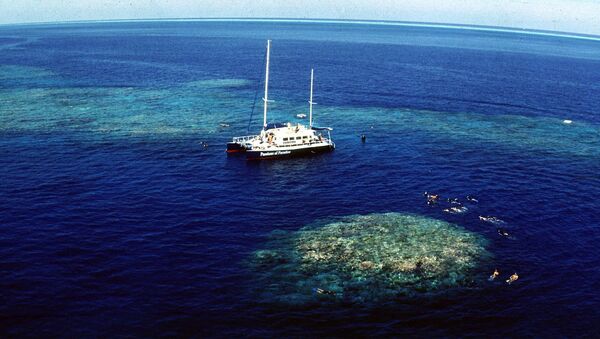The 70 kilometre-long sand dunes that were submerged by the sea around 12,000 years ago were discovered 40 kilometres off the east coast of Australia, the local broadcaster ABC News reported. The masses, which look like sand dunes on the nearby Fraser Island, turned out to be rock-hard and well preserved.
"I think the intriguing thing is what mechanism enabled them to be so well preserved", a scientist from the University of Sydney, Tiago Passos, told the broadcaster.
The 15 metre high formations, which are located 60 metres underwater, were first spotted with sonar imaging while the scientists were studying the Great Barrier Reef. The new study detected a peculiarity that might have helped solidify the dunes, allowing them to be preserved for thousands of years.
READ MORE: Sand Dunes in a White Coat: Snow Falls in Sahara Desert (PHOTOS, VIDEO)
The sand that the dunes are made of has calcium carbonate inside instead of quartz, a material that most modern-day sand dunes are made from. The scholars suggest that calcium carbonate was the key element that helped harden the dunes under the influence of fresh rainwater, cementing the sand together before the sea submerged the dunes. This makes the findings unique and helpful for determining how wind, as well as physical obstacles, formed the terrain many years ago. Modern dunes, including the ones on the nearby Fraser Island, could hardly be preserved for thousands of years, as their composition differs.
"They would be eroded, as they don't have enough carbonate content to turn them into rock", Passos said.




